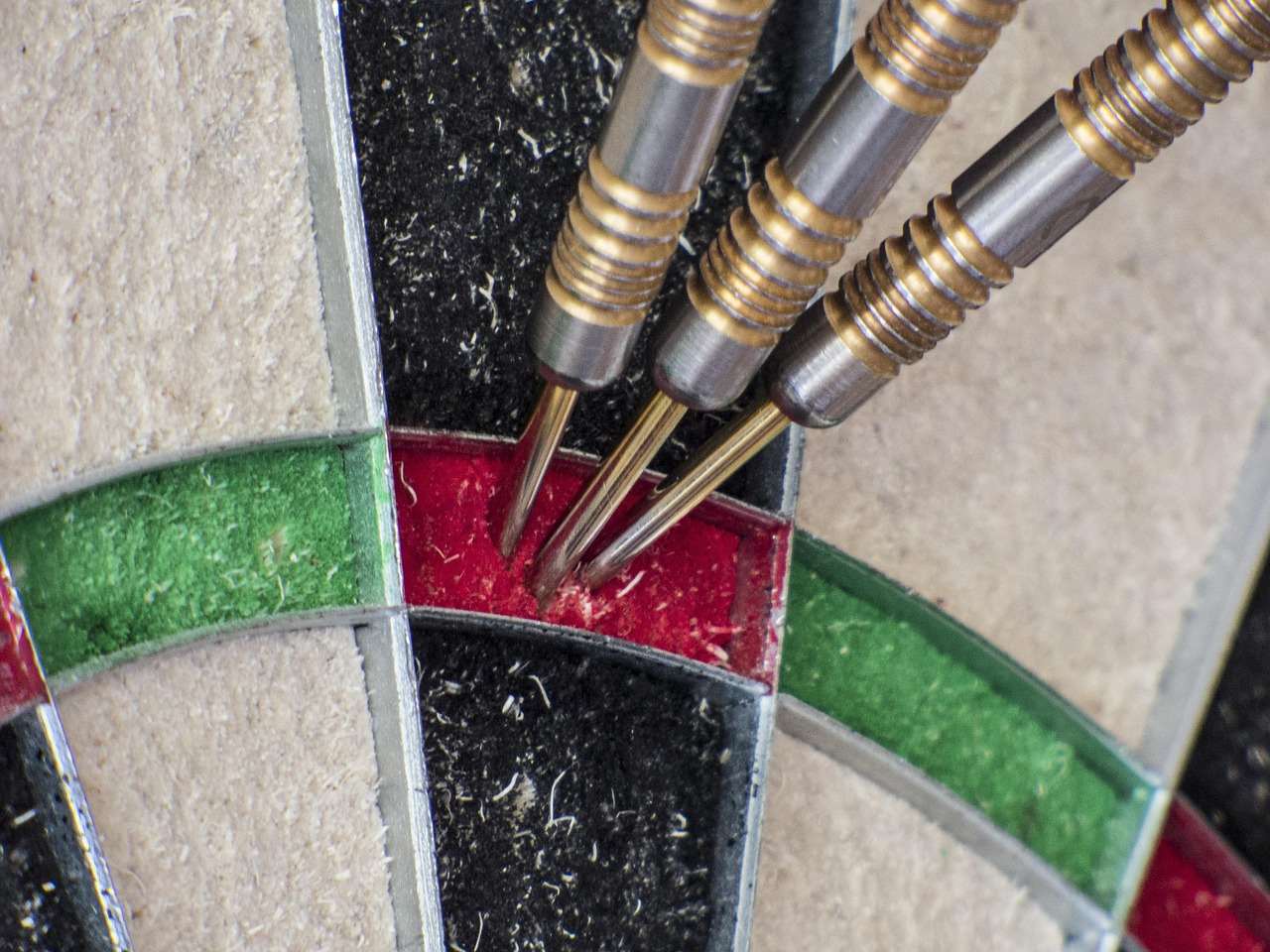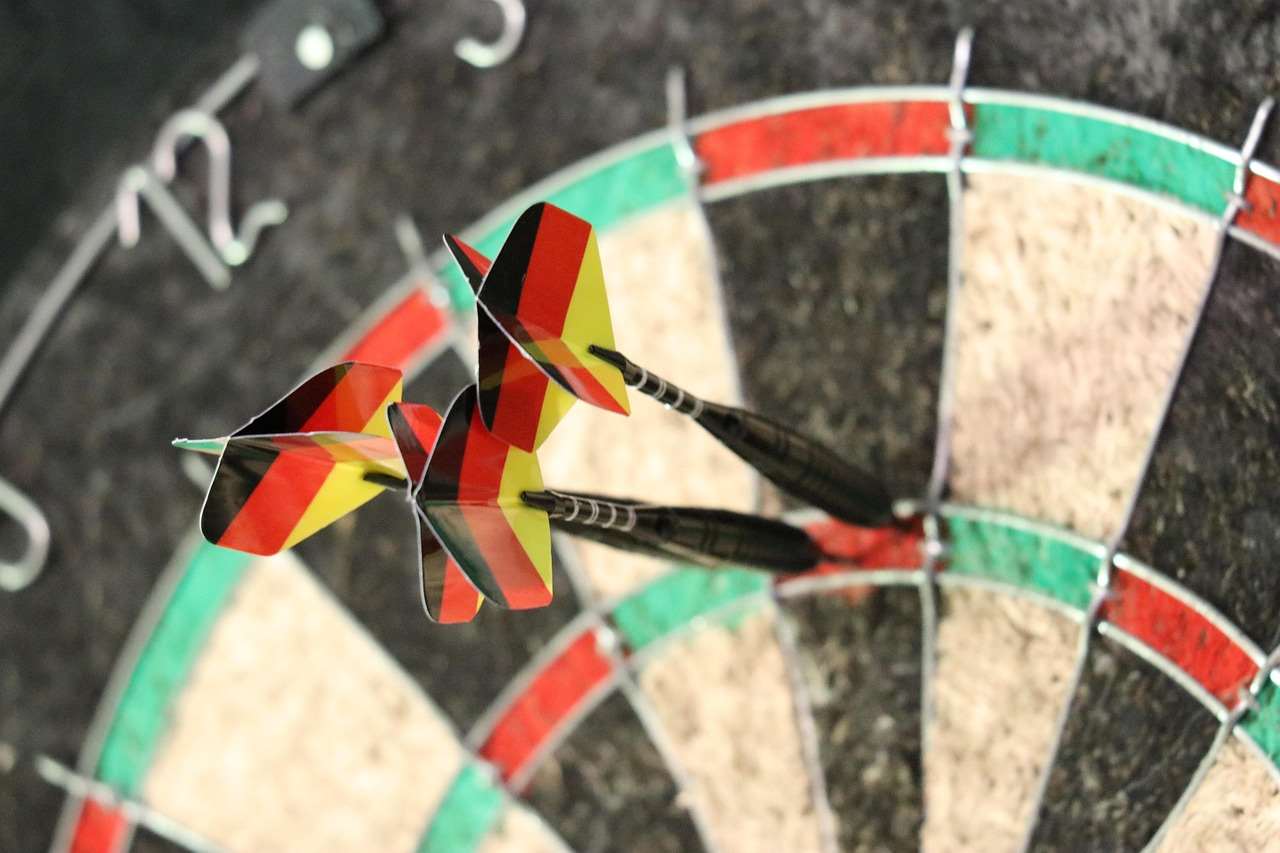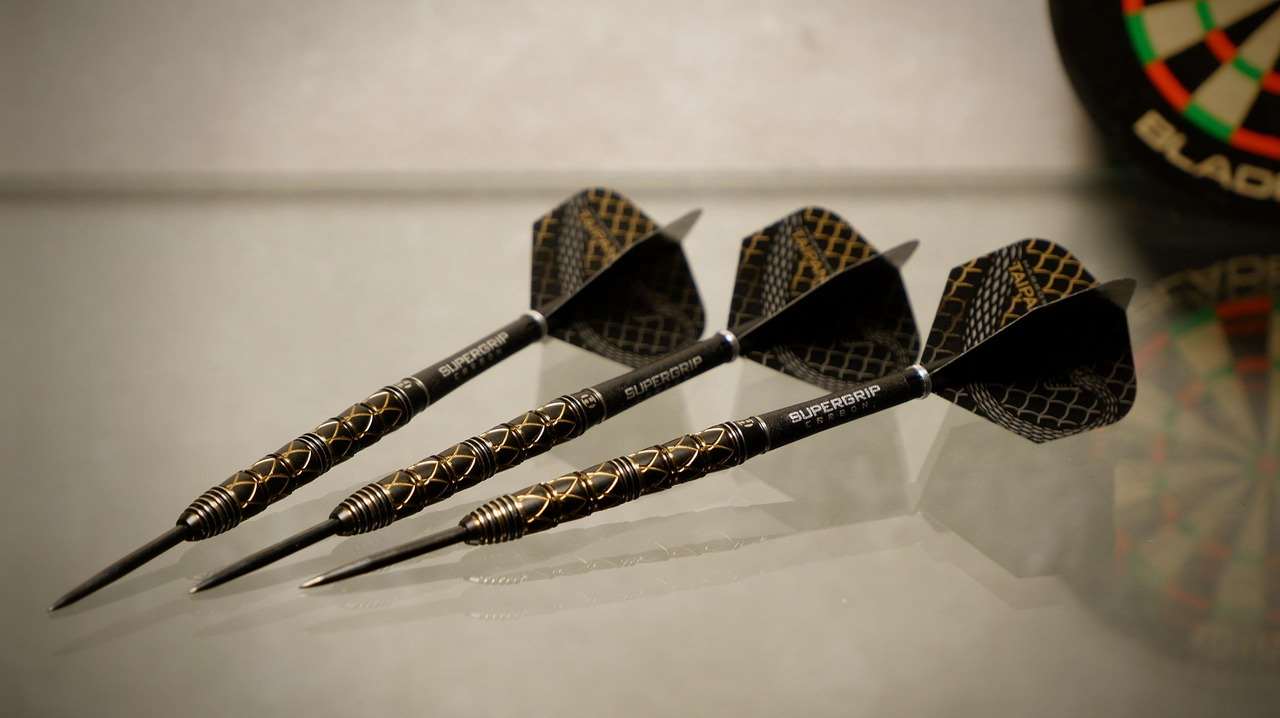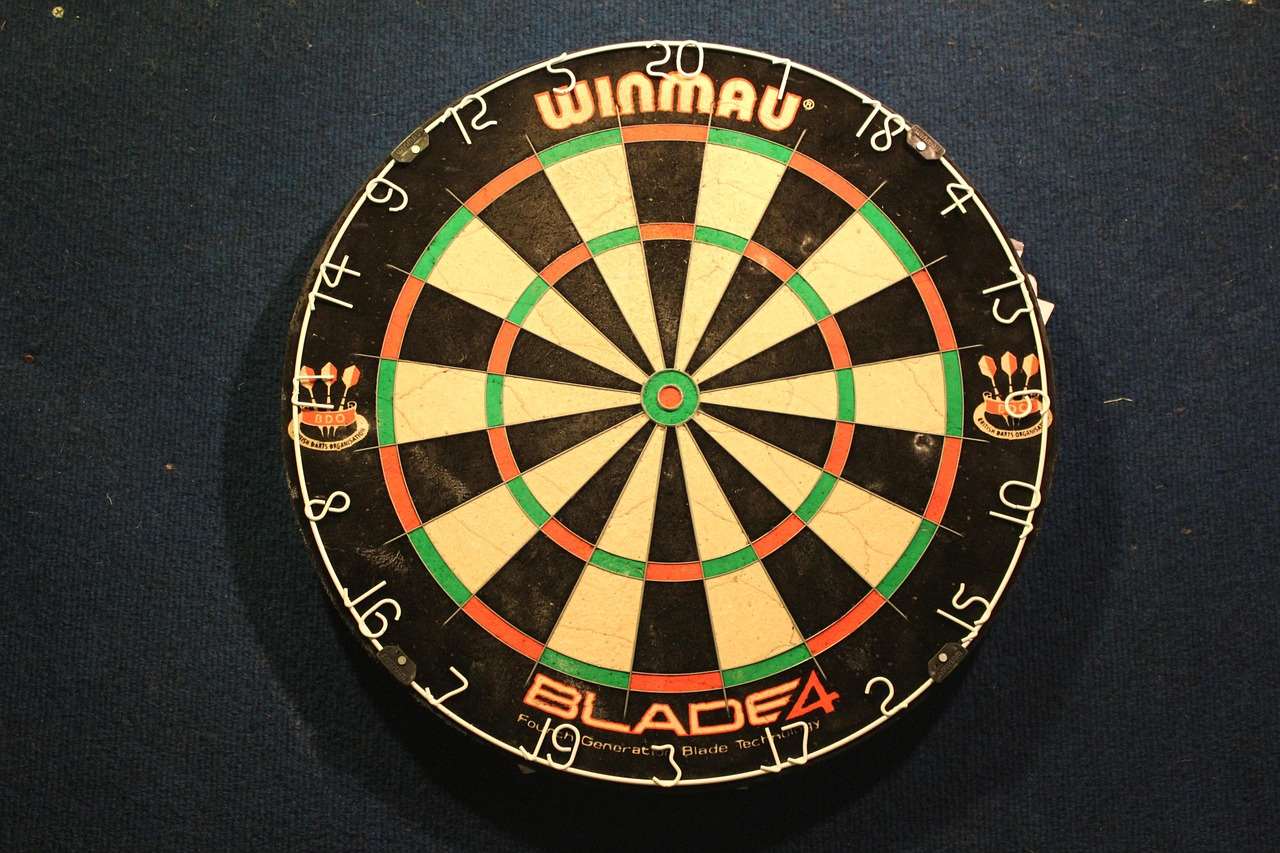Creating the perfect **darts setup at home** is easier than you think, and this guide will show you how to achieve a professional-level playing experience in your own space. We’ll cover everything from choosing the right equipment and properly mounting your dartboard to optimizing your throwing area for comfort and accuracy.
⚠️ Still Using Pen & Paper (or a Chalkboard)?! ⚠️
Step into the future! The Dart Counter App handles all the scoring, suggests checkouts, and tracks your stats automatically. It's easier than you think!
Try the Smart Dart Counter App FREE!Ready for an upgrade? Click above!
Planning Your Darts Setup at Home
Before you start drilling holes and hanging dartboards, careful planning is essential. Consider the following factors to ensure your **darts setup at home** is safe, enjoyable, and fits seamlessly into your living space.
Space Requirements
The most crucial aspect is having enough space. You’ll need a clear, unobstructed area both in front of and behind the dartboard. The official throwing distance for steel-tip darts is 7 feet 9 1/4 inches (2.37 meters) from the face of the dartboard. Make sure you have at least this much space, preferably more, to allow for comfortable throwing. Also, consider the area behind the throw line; you’ll want ample room for players to stand and wait their turn. If space is limited, consider a **darts setup bedroom**, although safety precautions are even more critical in such cases.
Safety Considerations
Safety is paramount. Choose a location away from high-traffic areas, especially if you have children or pets. A stray dart can cause serious injury. Protect the wall behind your dartboard with a backboard or surround. This will not only prevent damage to your wall but also reduce bounce-outs. Consider using a rubber mat on the floor in front of the dartboard to protect your flooring and provide a more comfortable standing surface. Think about where the darts might land if they miss the board and take preventative measures. You can even search online for **darts flight template** options to print your own personalized darts.

Lighting
Good lighting is essential for accurate dart throwing. Position your dartboard in a well-lit area, or install a dedicated dartboard lighting system. Shadows can distort your perception and affect your aim. Ideally, the lighting should be focused on the dartboard without casting glare in your eyes. Consider a circular light that surrounds the board for even illumination. Correct lighting ensures your **darts setup at home** is professional and enhances gameplay. You might even want to download a **darts score app free** to easily keep track of your games.
Essential Equipment for Your Darts Setup at Home
Having the right equipment is just as important as having the right space. Here’s a breakdown of the essential components for a successful **darts setup at home**.
Dartboard
The heart of your **darts setup at home** is, of course, the dartboard itself. Bristle dartboards are the standard for steel-tip darts. Look for a high-quality board made from tightly packed sisal fibers. A self-healing board will last longer, as the fibers will naturally close up after each dart is removed. Popular brands include Winmau, Unicorn, and Nodor. When purchasing your dartboard, consider the gauge of the wiring; thinner wiring allows for a larger target area and fewer bounce-outs.
Darts
Darts come in a variety of weights, materials, and styles. Experiment to find the darts that feel best in your hand and suit your throwing style. Brass darts are a good starting point for beginners, while tungsten darts offer a slimmer profile and greater density for more consistent throws. Pay attention to the grip, barrel shape, and flight type when choosing your darts. Remember, finding the right dart is a personal preference, and it can significantly impact your accuracy. Don’t forget to check for a **dart counter discount code** to save on your purchase. If you want to see a **darts game right now**, you can find a stream online and watch professional players.

Backboard or Surround
As mentioned earlier, a backboard or surround is essential for protecting your wall from stray darts. These are typically made of cork, foam, or wood and surround the dartboard to catch errant throws. This not only prevents damage to your wall but also reduces the risk of darts bouncing off and causing injury.
Oche (Throw Line)
The oche, or throw line, marks the official throwing distance. You can purchase a pre-made oche or simply use a piece of tape or a strip of wood. The important thing is to ensure it’s the correct distance from the dartboard (7 feet 9 1/4 inches for steel-tip darts). A clearly defined oche helps maintain consistency in your throwing stance and promotes fair play.
Step-by-Step Guide to Installing Your Darts Setup at Home
Now that you have your equipment, it’s time to install your **darts setup at home**. Follow these steps for a secure and professional installation.
Mounting the Dartboard
The center of the dartboard (the bullseye) should be 5 feet 8 inches (1.73 meters) from the floor. Use a measuring tape and a level to ensure accuracy. Most dartboards come with a mounting bracket. Attach the bracket to the wall using screws and anchors, ensuring it’s securely fastened. Then, hang the dartboard onto the bracket. Double-check that the board is level before tightening everything down. A wobbly dartboard can ruin your game and potentially cause damage.

Installing the Backboard or Surround
If you’re using a backboard, center it behind the dartboard and attach it to the wall using screws or adhesive. Make sure the backboard is large enough to provide adequate protection. If you’re using a surround, simply slide it over the dartboard. Some surrounds are designed to be self-supporting, while others may require additional mounting.
Marking the Oche
Measure 7 feet 9 1/4 inches from the face of the dartboard (not the wall) and mark the location for your oche. You can use tape, a strip of wood, or a pre-made oche. Ensure the oche is straight and securely attached to the floor. Consider adding a rubber mat in front of the oche for added comfort.
Optimizing Your Darts Setup for Performance
Once your **darts setup at home** is installed, take some time to optimize it for peak performance.
Fine-Tuning Your Lighting
Experiment with different lighting options to find the setup that provides the best visibility and minimizes shadows. A dedicated dartboard lighting system is a worthwhile investment, as it will provide consistent and even illumination. Make sure the light source is positioned to avoid glare in your eyes.

Adjusting Your Throwing Stance
Your throwing stance is crucial for accuracy. Experiment with different stances to find the one that feels most comfortable and allows you to maintain a consistent throwing motion. Some players prefer to stand sideways to the dartboard, while others prefer a more frontal stance. The key is to find a stance that allows you to maintain balance and control.
Practicing Regularly
The more you practice, the better you’ll become. Set aside some time each day or week to practice your dart throwing. Focus on consistency and accuracy, and don’t be afraid to experiment with different techniques. You can even use a **darts score app free** to track your progress and identify areas for improvement.
Advanced Tips for Your Darts Setup at Home
Ready to take your **darts setup at home** to the next level? Here are some advanced tips to consider:
Soundproofing
Darts can be noisy, especially if you have thin walls or live in an apartment. Consider adding soundproofing materials to reduce noise transmission. Cork panels, acoustic foam, and heavy curtains can all help dampen the sound of darts hitting the board. This will not only make your **darts setup at home** more enjoyable for you but also more considerate of your neighbors.
Dedicated Scoring Area
Create a dedicated scoring area near your dartboard. This could be a small table or shelf where you can keep your scorecard, pens, and other accessories. Having a designated scoring area will help keep your game organized and prevent clutter. It is useful to know **when darts players lose their cool** because you might want to have a separate area if you want to take a break.

Customization
Personalize your **darts setup at home** to reflect your own style. Add some artwork, posters, or other decorations to create a fun and inviting atmosphere. You can even paint your walls in your favorite colors or add a custom-made dartboard cabinet.
Choosing the Right Location
Ultimately, the best location for your **darts setup at home** will depend on your individual circumstances and preferences. However, by considering the factors outlined in this guide, you can create a safe, enjoyable, and professional-level playing experience in your own space. Remember that **bullseye darts brisbane** might be a fun place to visit while on holiday.
Conclusion
Setting up a **darts setup at home** is a rewarding project that can provide hours of entertainment for you and your friends. By carefully considering space requirements, safety considerations, essential equipment, and installation steps, you can create a professional-level playing experience in your own space. Remember to optimize your setup for performance by fine-tuning your lighting, adjusting your throwing stance, and practicing regularly. So, gather your equipment, follow these tips, and get ready to throw some darts! Consider downloading an Automatic dart scoring app to improve your dart scoring skills.
Hi, I’m Dieter, and I created Dartcounter (Dartcounterapp.com). My motivation wasn’t being a darts expert – quite the opposite! When I first started playing, I loved the game but found keeping accurate scores and tracking stats difficult and distracting.
I figured I couldn’t be the only one struggling with this. So, I decided to build a solution: an easy-to-use application that everyone, no matter their experience level, could use to manage scoring effortlessly.
My goal for Dartcounter was simple: let the app handle the numbers – the scoring, the averages, the stats, even checkout suggestions – so players could focus purely on their throw and enjoying the game. It began as a way to solve my own beginner’s problem, and I’m thrilled it has grown into a helpful tool for the wider darts community.